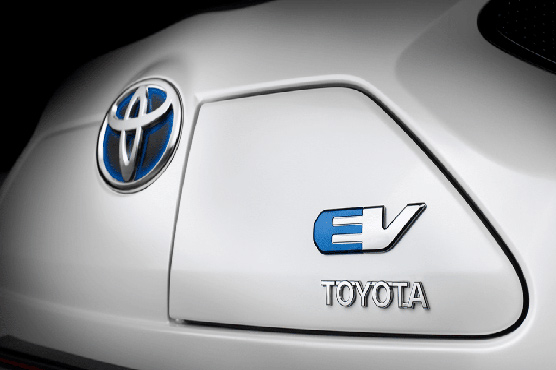Toyota-Panasonic venture to start EV battery development in April

It will begin operations on April 1 with more than 5,000 employees.
TOKYO (Reuters) – Toyota Motor Corp and Panasonic Corp have agreed to set up a joint venture that will begin developing electric vehicle (EV) batteries from April, as the Japanese companies gear up for an expected surge in demand.
The new company, called Prime Planet Energy and Solutions, will develop prismatic - or square-shaped - batteries that will be available to any automaker, the two companies said in a statement on Monday.
It will begin operations on April 1 with more than 5,000 employees, with Toyota owning 51% and Panasonic holding the remainder, the pair said.
The venture reflects the aim of the Japanese companies to become bigger global players in the automotive battery industry, which is vital for the development of affordable EVs, as stricter environmental regulations worldwide accelerate a shift toward environmentally friendlier cars.
“Batteries - as solutions for providing energy for automobiles and various other forms of mobility, and as solutions for various kinds of environmental issues - are expected to fulfil a central role in society going forward,” the companies said in the statement.
Panasonic has been the exclusive supplier of cylindrical batteries for U.S. EV maker Tesla Inc, but has been looking to expand its list of customers by stepping up development of the prismatic batteries more widely used in the industry. Tesla last month announced it would also source batteries from South Korea’s LG Chem Ltd and China’s CATL.
Toyota, which pioneered the petrol-electric hybrid Prius in 1997, aims to get half of its sales from electrified vehicles by 2025, and is both developing its own batteries and tapping new suppliers to avoid a shortfall.
The two Japanese companies have been cooperating on battery research since at least 1996 when they set up a joint venture to make hybrid car batteries, called Primearth EV Energy.
Toyota uses big data to guard against accelerator-brake mix-up
Toyota Motor Corp unveiled an emergency safety system on Monday that uses big data to ignore the accelerator if it determines the driver steps on the pedal unintentionally.
Japan’s biggest car maker will roll out what it calls an “accelerator suppression function” in new cars from this summer, beginning in Japan.
The system is a response to an increasingly common cause of traffic accident in ageing Japan where the driver, often elderly, mistakes the accelerator for the brake.
Some 15% of fatal accidents on Japanese roads in 2018 were caused by drivers who were 75 years or older, showed a report from the government, which actively encourages elderly drivers to give up their licences.
Toyota’s announcement comes as automakers globally invest heavily in so-called active safety features as they work to develop fully autonomous cars.
It also comes in the same year Toyota will act as exclusive mobility sponsor for the Tokyo Olympics, where it will showcase its fully self-driving e-Palette transportation pods carrying athletes around the Olympic village at low speeds.
Among competitors, Honda Motor Co Ltd plans to launch a car this year capable of full autonomy in highway traffic jam situations. Nissan Motor Co Ltd released the second generation of its ProPilot driver-assist system last spring, offering hands-free operation for single-lane highway driving.
Toyota rolled out its first-generation Safety Sense package in 2015, which included automated emergency braking and a lane departure alert. The second generation became available in 2018, adding assisted single-lane highway driving and making the car capable of recognising pedestrians at nighttime and bicycles.
Its new feature was developed using data collected from the internet-connected cars it has on the road. Unlike the car maker’s existing safety options, the new system does not require the presence of an obstacle to function.

